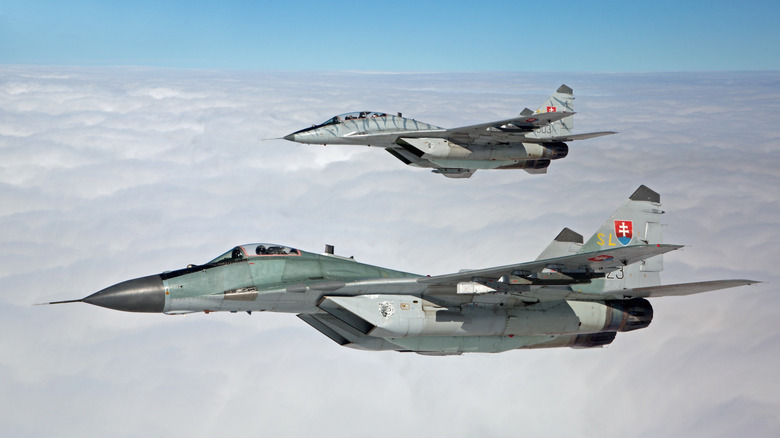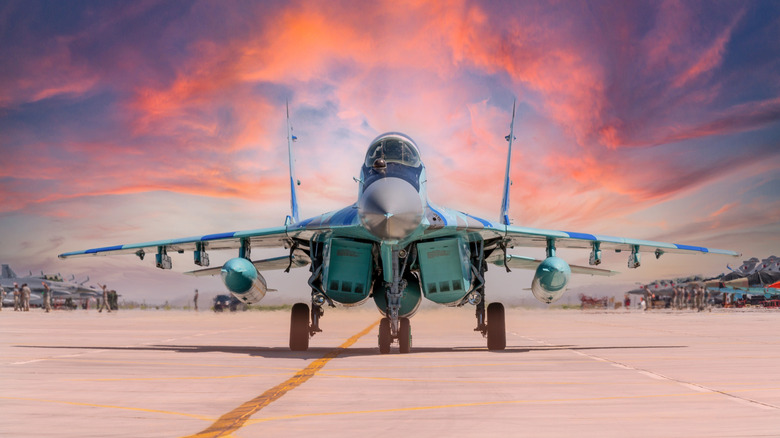Why Is The MiG-29 Fighter Jet Called The Fulcrum?
Americans are accustomed to calling military aircraft by a name other than the F-22 or F35, so those jets are commonly referred to as the Raptor or Lightning II. Not every world power follows this custom, though. The Russian military commonly uses the manufacturer designation, such as MiG-29 or Su-57. For instances like that, NATO created a system of names that let military personnel quickly relay the type of plane they're talking about. In the case of the MiG-29 fighter jet, NATO gave it the reporting name "Fulcrum."
A fulcrum, according to Merriam-Webster, is "the support about which a lever turns." A pivot. "Fulcrum" aptly described the MiG-29, as it flew circles around NATO fighters during the '80s, representing a pivot in Soviet aerospace engineering. The Fulcrum's abilities were due in part to its twin Isotov RD-33 turbofans, pushing it as fast as Mach 2.3. It wasn't as fast as the F-15 Eagle, which could hit Mach 2.5, but it outran just about any other fighter.
It wasn't so much its speed that shone, though, as it was the plane's maneuverability. In a comparison between the MiG-29 and F-16, the Fulcrum has superior agility, making immediate and sustained turns at 28 degrees per second versus the F-16's 26. While early versions of the MiG-29 performed slightly worse than its Western counterparts due to a lack of fly-by-wire avionics, they were light-years ahead of their predecessors. This was the first Soviet-made fourth-generation fighter jet, a pivotal design for the USSR.
Other NATO designations for aircraft
It's the Air Standardization Coordinating Committee – with members from the U.S., U.K., Australia, Canada, and New Zealand — that decides on a military aircraft's reporting name. The process is simple but nuanced.
When naming a fighter jet, the committee chooses a word that starts with F. This simplifies the process. While the MiG-29 is the Fulcrum, the fifth-generation Sukhoi Su-57 is known as the Felon. Seldom does the committee pick a name pilots care for, but many Fulcrum pilots were partial to it and even referred to it as such.
Moreover, anything with a jet engine receives a two-syllable name. Propellor-powered aircraft get a name with a single syllable. NATO's reporting names don't stop with fighter jets, either. All fixed-wing aircraft receive a reporting name that begins with the letter of its mission. Fighters start with F, bombers begin with B, and cargo planes start with the letter C. For example, the Tupolev Tu-95 bomber is the Bear and the Tupolev Tu-160 is the Blackjack.
Helicopters, on the other hand, start with the letter H, such as the Mi-24 Hind, one of the best attack helicopters ever used in war. If there are variants of any of the aircraft, NATO will add a suffix letter, such as Flanker-E. NATO used to give the reporting names exclusively to Soviet and Russian planes, but now uses them for Chinese aircraft, as well.

